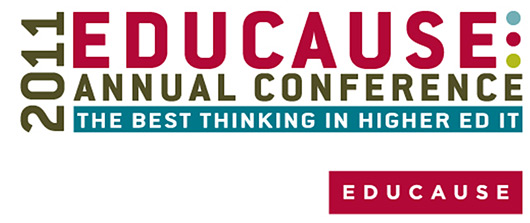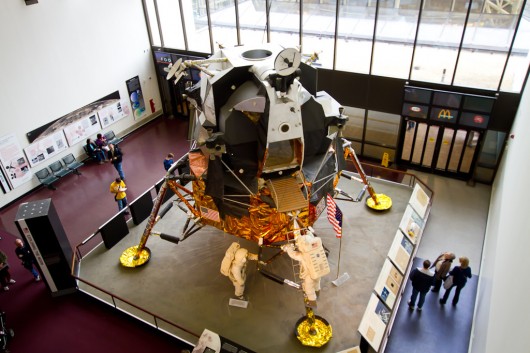It has been a week now since the EduCause 2011 conference in Philadelphia was closed, the dust has settled, leaving some time to digest all the new ideas presented at several brilliant sessions. It was great to see an active group of people both at the Virtual Worlds Discussion Session, and Aalto University’s presentation about LabLife3D – both featuring live virtual connections to people abroad.
One of the most valuable sentences that I heard during the Virtual Worlds Discussion Session, as trivial as it might seem, so many times we (the geeks) are so lost with this most simple truth: “the pedagogy should drive the technology, and not vice versa“.
This left me thinking about something that has been going around in my mind for a good while now, and something that has seemed to be the hot topic in virtual worlds discussions at least for couple years now. It is the question of “what grid should we be on?”. The recurring question that I keep hearing all the time when people (try to) talk about education in virtual worlds is that is OpenSim [replace with any other alternative grid solution] a viable platform for our school/organisation/group to be teaching in?
What I find a bit appalling in this discussion is the fact that people are so focused on the platforms – the technology – that we start to forget to see the woods from the trees.
The technology alone won’t serve as a pedagogical solution. So the thing I have been wondering about is that when we don’t actually have yet that much feasible content, substance, solutions and applications planned or designed, we are already debating about the technology platform. And at the same time we spend our time and energy in the debate about the platforms, that could and should be used in actually designing and planning meaningful content, that could be then implemented on most of these platforms that are available today.
There seems to be this danger, that the digital natives who are very immersed already in the virtual worlds, the geeks, the engineers, the designers … Their interest lies so much in the technological possibilities of different platforms, that they so easily forget what is the most important and fundamental things that the educators and teachers need. And the non-natives get very confused in all this talk about choices of platforms when they barely can manage just one platform. And the deepening talk about technological possibilities drives the discussion away from the pedagogical possibilities, and this discussion grows a gap between the technologists and educators.
Another problem in these discussions is that the geeks often get excited about new things, new gadgets, new technologies to toy with and so on. Pedagogical solutions would need commitment to certain technology for longer term than just a year or two, for the educators and teachers to actually be able to start use the technology in their teaching work. If we get excited about new possibilities every few months (which is important in it’s own way too), we can easily start to lose the focus on creating solutions that people can actually adher to.
What I personally believe, is that if we wish that the educators and teachers would start to take the virtual worlds seriously as a feasible technology for education, in larger scale too rather than just the niche early adopters and technologists, we have to start to shift the area of discussion from the technology back to the pedagogy. The pedagogy should start to drive the technology, and the discussions and ideas should start to flow from that point of view.
My personal dream is that in maybe five years from now on, the different virtual worlds platforms will be seamlessly connected, be it via the hypergrid technology or something similar, so that the end user don’t have to actually know anything about the underlying technologies. They could type in keywords in a search engine, like google, and get a set of results, some which may point them to our traditional 2D web, some which may lead them into 3D content, in one virtual world, where they could move and explore and further on travel between several other virtual worlds, return back to 2D content and so on.
At this point the educators and teachers don’t need to actually care about how the environments for education are supported and ran. I would say that today if we would get a random sample of teachers from some higher education organisation and go ask them that “where are the servers for your school’s web-system, and on which technology platform do they run on”, majority of teachers don’t know and don’t care to know, and that’s how it should be.
When we get on the same level of transparency regarding the virtual world technologies, the sky is the limit for educational solutions.
Below a few examples from Washington DC of moments in our past where people had dreams and drove the technology to make those dreams come true.


